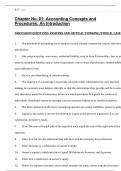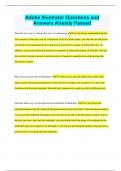Exam (elaborations)
Solutions Manual, Solutions For College Accounting, A Practical Approach, 15th Canadian Edition Slater, Deschamps, Good
- Course
- ACCT
- Institution
- University Of Victoria (UVic )
Solutions For College Accounting: A Practical Approach, Canadian Edition, 15th edition / College Accounting 15th Edition Solutions. Jeffrey Slater, Mike Deschamps, Debra Good, 9780137627646, Solutions Manual / Slater 15e Solutions for College Accounting.
[Show more]




